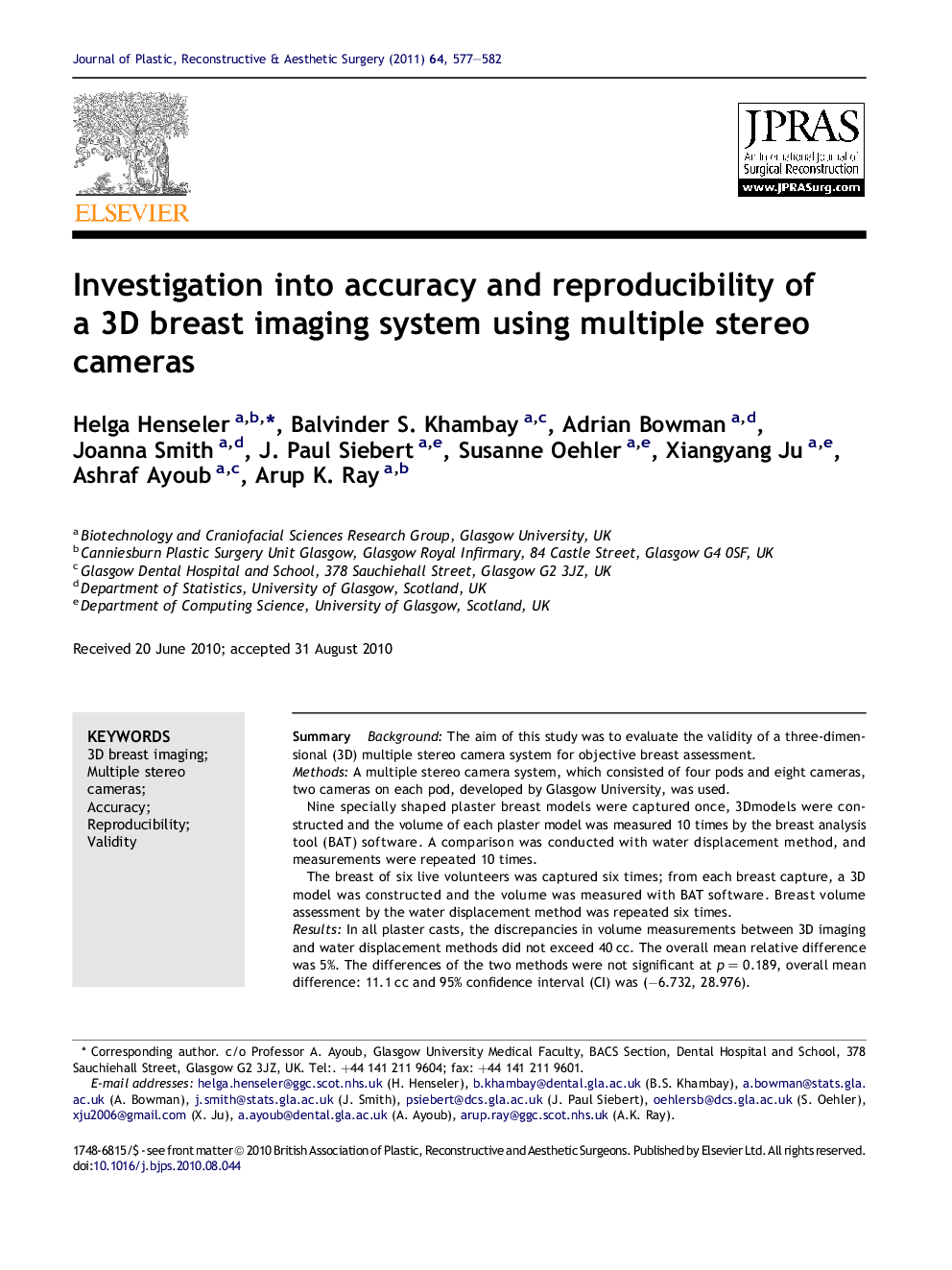| Article ID | Journal | Published Year | Pages | File Type |
|---|---|---|---|---|
| 4120846 | Journal of Plastic, Reconstructive & Aesthetic Surgery | 2011 | 6 Pages |
SummaryBackgroundThe aim of this study was to evaluate the validity of a three-dimensional (3D) multiple stereo camera system for objective breast assessment.MethodsA multiple stereo camera system, which consisted of four pods and eight cameras, two cameras on each pod, developed by Glasgow University, was used.Nine specially shaped plaster breast models were captured once, 3Dmodels were constructed and the volume of each plaster model was measured 10 times by the breast analysis tool (BAT) software. A comparison was conducted with water displacement method, and measurements were repeated 10 times.The breast of six live volunteers was captured six times; from each breast capture, a 3D model was constructed and the volume was measured with BAT software. Breast volume assessment by the water displacement method was repeated six times.ResultsIn all plaster casts, the discrepancies in volume measurements between 3D imaging and water displacement methods did not exceed 40 cc. The overall mean relative difference was 5%. The differences of the two methods were not significant at p = 0.189, overall mean difference: 11.1 cc and 95% confidence interval (CI) was (−6.732, 28.976).In the live models, the differences in breast volume measurements between the 3D imaging and water displacement methods were significant at p ≤ 0.017, overall mean difference: 207.05 cc and 95% CI (56.12, 357.98). Measurements by 3D imaging were consistently smaller.In the live models, 3D imaging overall was a more reproducible method for measuring breast volume than the water displacement method with a standard deviation of 36 units cc−1 and 62.6 units cc−1, respectively.ConclusionsThe 3D breast imaging system using multiple stereo cameras was accurate for measuring the volumes of breast-shaped plaster models, and it was more reproducible than the water displacement method in live models. 3D imaging is a reliable method for the comparative assessment of breast volume.
